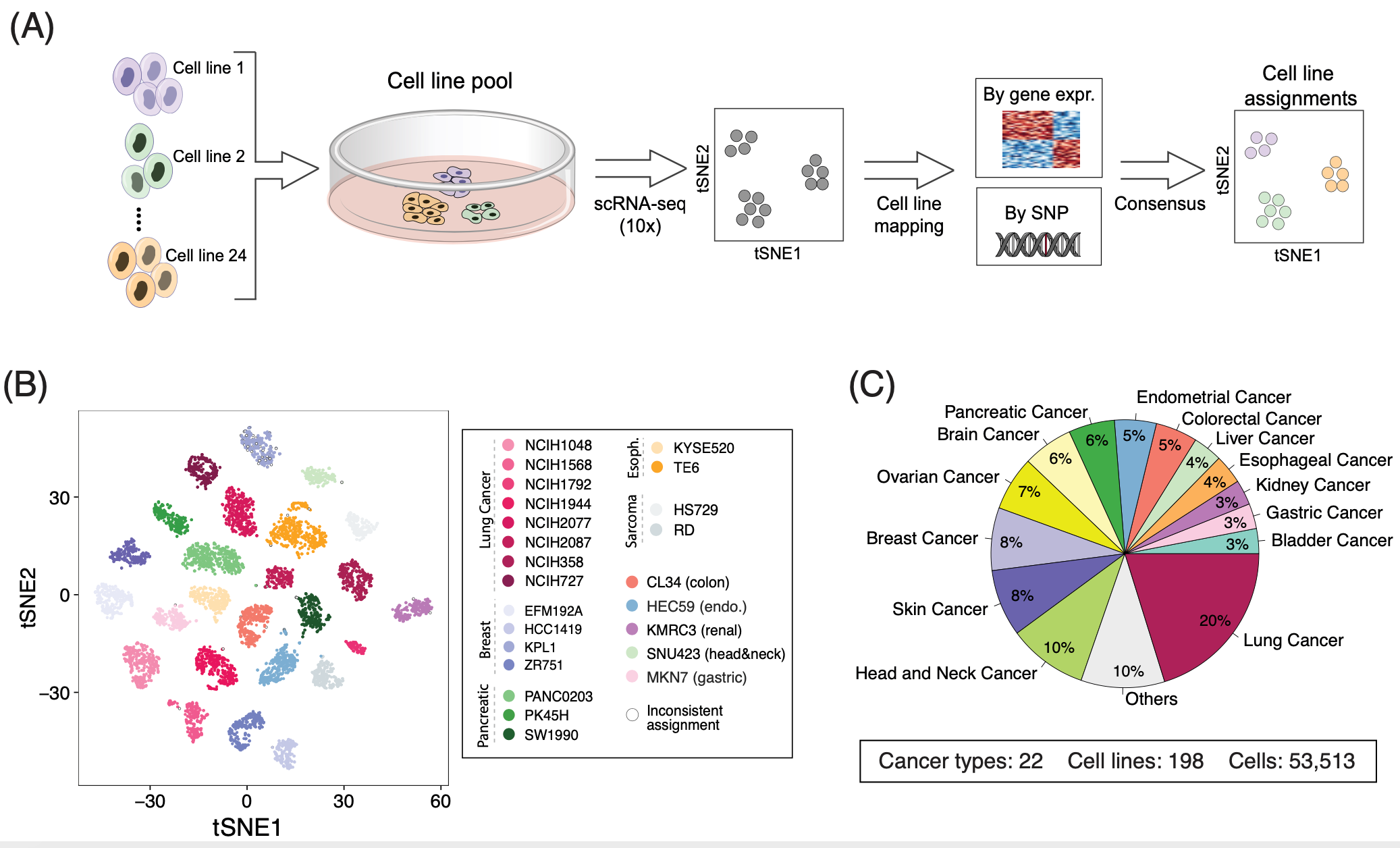
In recent years, with the advances of single-cell RNA sequencing (scRNA-seq), studies of different cancer types revealed that a single tumor may contain subpopulations of malignant cells with different transcriptional profiles. This cellular plasticity has been shown to play a central role in tumor progression and therapeutic resistance. Although cell lines are the cornerstone of preclinical research in oncology, it is unclear to what extent they recapitulate the heterogeneity observed in patient tumors. Research developed at the Weizmann Institute (Israel) and published on 10/30/2020 in the renowned journal Nature Genetics sought to answer this question by characterizing hundreds of human tumor cell lines using multiplex scRNA-seq. The study, led by Dr. Itay Tirosh, was part of the doctoral dissertation of Dr. Gabriela Sarti Kinker, defended in 2019 under the supervision of Dr. Pedro Augusto Carlos Magno Fernandes at the Department of Physiology of the Biosciences Institute of the University of São Paulo, and was supported by FAPESP (2014/27287-0, 2017/24287-8). In this work, the authors identified 12 expression programs that were recurrently heterogeneous within multiple cancer cell lines. Such programs were associated with diverse biological processes such as cell cycle, responses to stress, epithelial-mesenchymal transition and senescence. Surprisingly, 10 out of the 12 programs recapitulated those found in clinical tumor samples, which indicates that such plasticity is intrinsic to malignant cells, since it is observed in the absence of a native tumor microenvironment. By further exploring the data, researchers found that, in head and neck tumors, the presence of malignant cells with an epithelial senescence phenotype was associated with better responses to Cetuximab, an EGFR inhibitor commonly used in the clinic. This finding can thus guide the treatment strategies selected for such patients.



